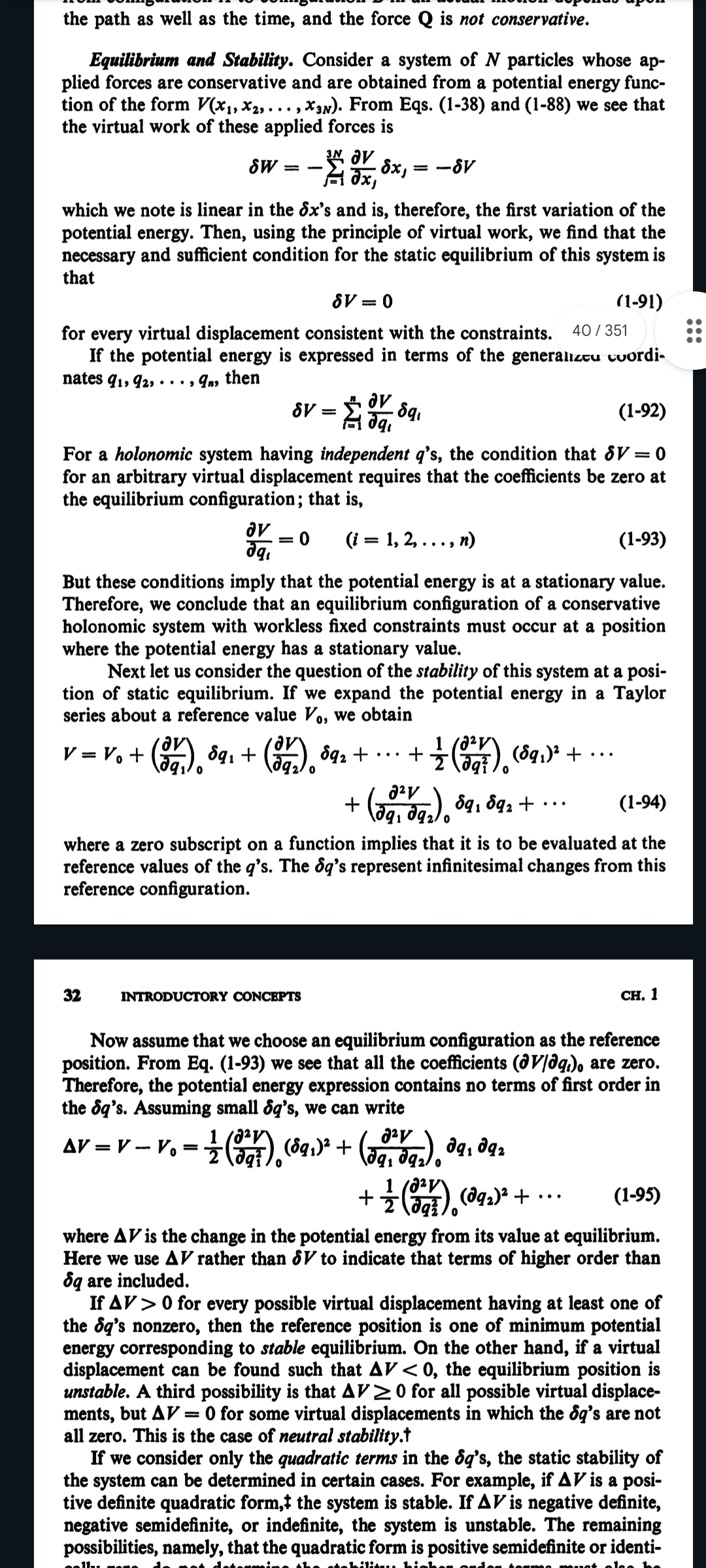Consider a system of N particles whose applied forces are conservative and obtained from a potential energy function V(x1, x2, ..., x3N). Using the principle of virtual work, what... Consider a system of N particles whose applied forces are conservative and obtained from a potential energy function V(x1, x2, ..., x3N). Using the principle of virtual work, what is the condition for static equilibrium? Additionally, how is stability determined from potential energy changes?

Understand the Problem
The question involves concepts from physics concerning equilibrium and stability in systems subject to conservative forces and their potential energy. It delves into how these aspects interact particularly in holonomic systems and the implications of potential energy variations on stability.
Answer
The condition for static equilibrium is δV = 0 for every virtual displacement. Stability is determined by ∆V from potential energy changes: if ΔV > 0, the system is stable; if ΔV < 0, it is unstable; if ΔV = 0, it is neutrally stable.
The necessary and sufficient condition for static equilibrium is ΔV = 0 for every virtual displacement consistent with the constraints. Stability is determined by the second-order derivative of the potential energy function: if ΔV > 0, the system is stable; if ΔV < 0, the system is unstable; if ΔV = 0, the system is neutrally stable.
Answer for screen readers
The necessary and sufficient condition for static equilibrium is ΔV = 0 for every virtual displacement consistent with the constraints. Stability is determined by the second-order derivative of the potential energy function: if ΔV > 0, the system is stable; if ΔV < 0, the system is unstable; if ΔV = 0, the system is neutrally stable.
More Information
Static equilibrium requires the potential energy derivative to be zero for all coordinates, ensuring no net force. Stability analysis involves the second derivative of the potential energy, assessing the nature (positive, negative, zero) of curvature at equilibrium.
Tips
Ensure to evaluate the second derivative when assessing stability, not just the first derivative which determines equilibrium.
Sources
- Lecture Notes on Classical Mechanics for Physics 106ab - astro.caltech.edu
- PHY422/820: Classical Mechanics - people.nscl.msu.edu
AI-generated content may contain errors. Please verify critical information